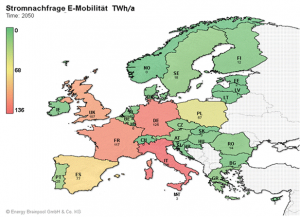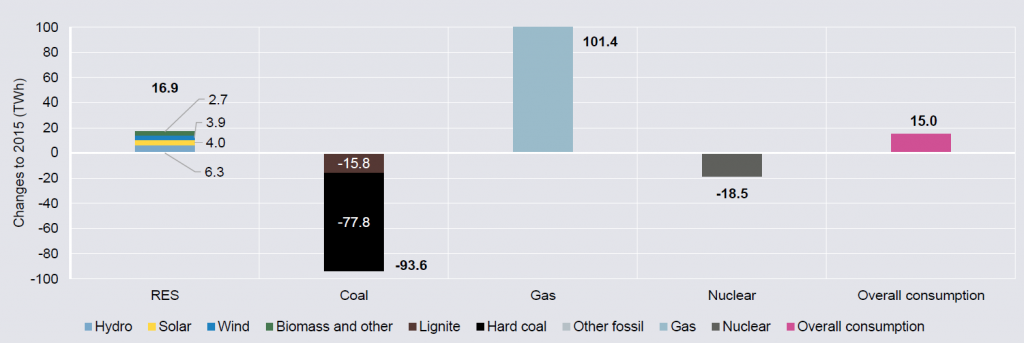In 2016 electricity consumption did not decline further and the investment in new solar and biomass facilities decreased. Due to less electricity generation from coal and more from natural gas, CO2-emissions in Europe went down by 4.5 percent.

The developments on the European energy markets have been summarized in a study by Agora Energiewende and Sandbag. Electricity consumption in the EU rose by 0.5 percent in 2016, where increased demand has been offset by renewable energies. According to the study there are no indications for structural electricity savings, even though foreseen by European regulations. The study also states that improvements in energy efficiency are sufficient to balance rising electricity demand due to better economic conditions, whereas they do not allow for the fulfillment of the European climate goals in the long-term.
On an EU-level the share of renewables in electricity generation grew from 29.2 to 29.6 percent, thus quite slowly. Part of the reason: 2016 has been a comparatively bad wind year. Furthermore in 2016 less power generating capacity from wind and PV went online than 2015. The estimated expansion of wind power in 2016 amounts to 10 to 12 GW, the one of PV to about 7.3 GW (Source: Montel).
In a year-on-year comparison the emissions of CO2 declined by 4.5 percent, despite of the increase in electricity consumption. This effect can mainly be attributed to the substitution of coal by natural gas in the UK (responsible for half of the emission reduction), Italy, the Netherlands and Germany. Reasons for that fuel switch and the higher share of gas-fired electricity generation were the lower prices for natural gas compared to coal. As figure 1 shows electricity generation from coal-fired power plants in 2016 declined by 94 TWh on the European level, while gas-fired generation grew by 101 TWh (Source: Agora Energiewende, Sandbag).

Figure 1: Changes in gross electricity generation and consumption 2015 to 2016 in TWh (source: Agora Energiewende, Sandbag)
In total, the emission of 48 million tons of CO2 has been saved. The authors of the study do however not expect a long-term trend here, as even the reforms of the EU emission trading system will have little effect on the price for CO2-certificates. The oversupply of emission allowances grew even further in 2016 and reached 3.2 billion tons in 2016. During last year only 1.8 billion CO2-certificates have been used. Thus the supply of allowances exceeds the demand by almost a factor of 2 (Source: Agora Energiewende).
Dave Jones, analyst at Sandbag summarizes the key findings of the study: “The energy transition in the European power sector slowed slightly in 2016: electricity consumption has stopped falling now that economic growth has picked up, and investment into new solar and biomass seems to have slowed. But, encouragingly, emissions still fell significantly, due to a switch from coal to gas. Further switching is possible, but only if more coal plants close, the carbon price significantly rises, or gas prices fall back down again”.



